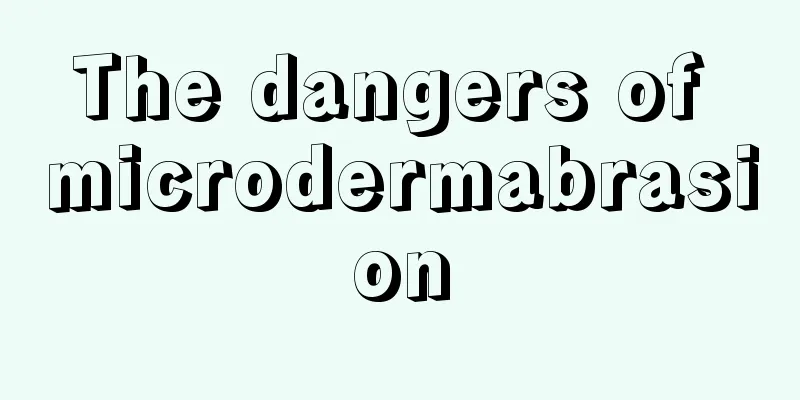What disease will you get if you eat meat with pork worms?

|
In recent years, there have been many reports and rumors about citizens eating pork infected with red worms. This is a pathogenic worm that can parasitize the human body. If you eat diseased pork containing red worms, you will be infected with worm eggs, which will destroy the human intestinal digestive function and even damage the digestive organs. What is pork worm Chain-shaped redworm, also known as pork redworm, pig-tapered redworm or hooked redworm, is the main human parasitic redworm in China. In ancient medical books, it is called Inch White Worm or White Worm. As early as 217 AD, there were records of white worms in "Golden Chamber Synopsis". In 610 AD, Chao Yuanfang described the worm's body shape as "one inch long, white in color, small and flat in shape" in "Treatise on the Causes and Symptoms of Various Diseases", and pointed out that it was transmitted by eating roasted meat. China's "Shennong Bencao Jing" records three herbs that can repel white worms. Human infection with cysticercus was discovered by Rumber as early as 1558, and later Kuchemeister and Leuchart confirmed the relationship between cysticercus cellulosae and human adult worms through breeding. Pathogenicity of Pork Ceratitis Adult worms parasitize the human small intestine, usually with one worm. In some endemic areas, the average number of infected worms is as high as 2.3 to 3.8. 1. Subcutaneous and muscular cysticercosis: Cysticerci are located under the skin or mucosa, in the muscles, forming nodules. The number can range from 1 to several thousand. There are more of them on the trunk and head and fewer on the limbs. The nodules are round or oval under the skin, about 0.5 to 1.5 cm in size, with a hardness similar to that of cartilage, can be felt by hand, have no adhesion to the subcutaneous tissue, and are not tender. They often appear in batches and may gradually disappear on their own. When the infection is mild, there may be no symptoms. When the number of parasites is large, the patient may experience muscle soreness, weakness, swelling, numbness or pseudomyositis. 2. Cerebral cysticercosis: Due to the different parasitic sites and infection degrees of cysticercosis in the brain, as well as the different conditions of the cysticercosis itself and the host's response to the parasites, the clinical symptoms of cerebral cysticercosis are extremely complex. There may be no symptoms at all, but some may cause sudden death. The course of the disease is usually slow, with the duration of cysticercosis ranging from 1 month to 1 year at most and up to 30 years. Epileptic seizures, increased intracranial pressure, and mental symptoms are the three main symptoms of neurocysticercosis, with epileptic seizures being the most common. According to records, among 1,590 patients with cerebral cysticercosis, 61% suffered from epileptic seizures. Cysticerci parasitizing in the brain parenchyma, subarachnoid space, and ventricles can increase intracranial pressure; lumbar puncture was performed on 315 patients with cerebral cysticercosis, and it was found that 38.4% of the patients had increased intracranial pressure. Symptoms of neurological diseases and cerebral blood flow disorders include memory loss, decreased vision and mental symptoms. Other symptoms may include headache, dizziness, vomiting, confusion, aphasia, limb numbness, local convulsions, hearing impairment, mental disorders, dementia, hemiplegia and blindness. Recently, Chinese scholars proposed the clinical classification of cerebral cysticercosis: ① epileptic type; ② brain parenchymal type; ③ subarachnoid type; ④ ventricular type; ⑤ mixed type; ⑥ subclinical type, among which the epileptic type is the most common. The clinical manifestations and severity of different types of patients are different, and the treatment principles and prognosis are also different. Patients with neurocysticercosis may induce the onset of encephalitis, and their encephalitis may be aggravated, leading to death. 3. Ocular cysticercosis: Cysticerci can parasitize any part of the eye, but most of them are located deep in the eyeball, in the vitreous body (51.6%), and under the retina (37.1%). Usually one eye is affected. In mild cases, the symptoms include visual impairment, during which the worms may be seen wriggling, while in severe cases, blindness may occur. Fundus examination was performed on 452 patients with ocular cysticercosis, of whom 39.16% had fundus abnormalities of varying degrees, including optic disc edema in 25%, optic nerve atrophy in 5%, and optic nerve edema combined with hemorrhage in 41 cases. Before the onset of ocular symptoms, about 11% of patients had a history of fever and 29% of patients had headaches. The life span of intraocular cysticercus is about 1 to 2 years. When intraocular cysticercus survives, patients can generally tolerate it. However, once the cysticercus dies, the decomposition products of the worm body can produce strong irritation, causing changes in intraocular tissues, vitreous opacities, retinal detachment, optic nerve atrophy, cataracts, secondary glaucoma, etc., which eventually lead to atrophy of the eyeball and blindness. |
<<: Bacterial meningitis needs to be treated like this
>>: What are the causes of calf swelling?
Recommend
What is the disease of always wanting to sleep
Always wanting to sleep is a symptom of narcoleps...
Is blue light harmful to the eyes?
The eyes are a very fragile part of the human bod...
Experts introduce the early symptoms of gastric cancer
Many people miss the best time to treat gastric c...
How to make thick lips thinner
Thick lips are relatively rare in life. In life, ...
How to clean a burnt casserole
In the cold winter, people like to use casseroles...
If tooth disease is not treated, will it just hurt? There's something even scarier to come
As we all know, good teeth mean a good appetite, ...
A one-month-old baby can't sleep well
Children are like lovely little angels, accompany...
What are the exercise methods to strengthen the spleen and stomach
Exercise can help us achieve the goal of strength...
What causes back pain and swollen eyelids
The cause of lower back pain and swollen eyelids ...
How to make milk tea, it’s very simple!
Milk tea is one of people's favorite drinks i...
What are the effects of massaging the Yongquan acupoint
Most people know that massage is good, but they d...
Reasons why hair falls out easily
Nowadays, people have irregular eating and sleepi...
What causes liver cancer? How can liver cancer be prevented?
Liver cancer is a type of cancer with a high inci...
What causes pomegranate to crack?
Pomegranate is a very popular fruit. Not only doe...
What to do if the pores on your arms are clogged
It is the hottest time of summer, and wearing coo...









